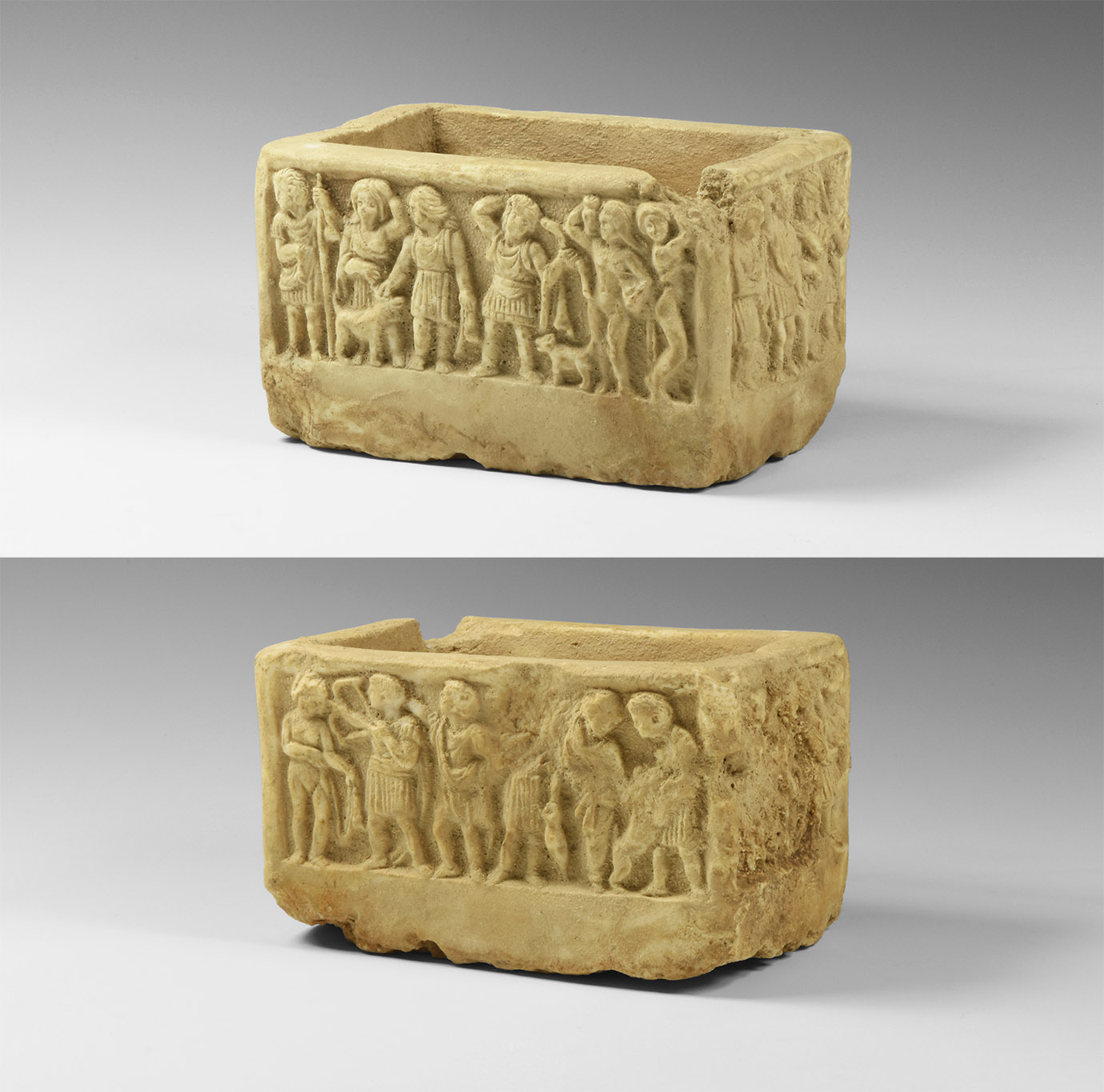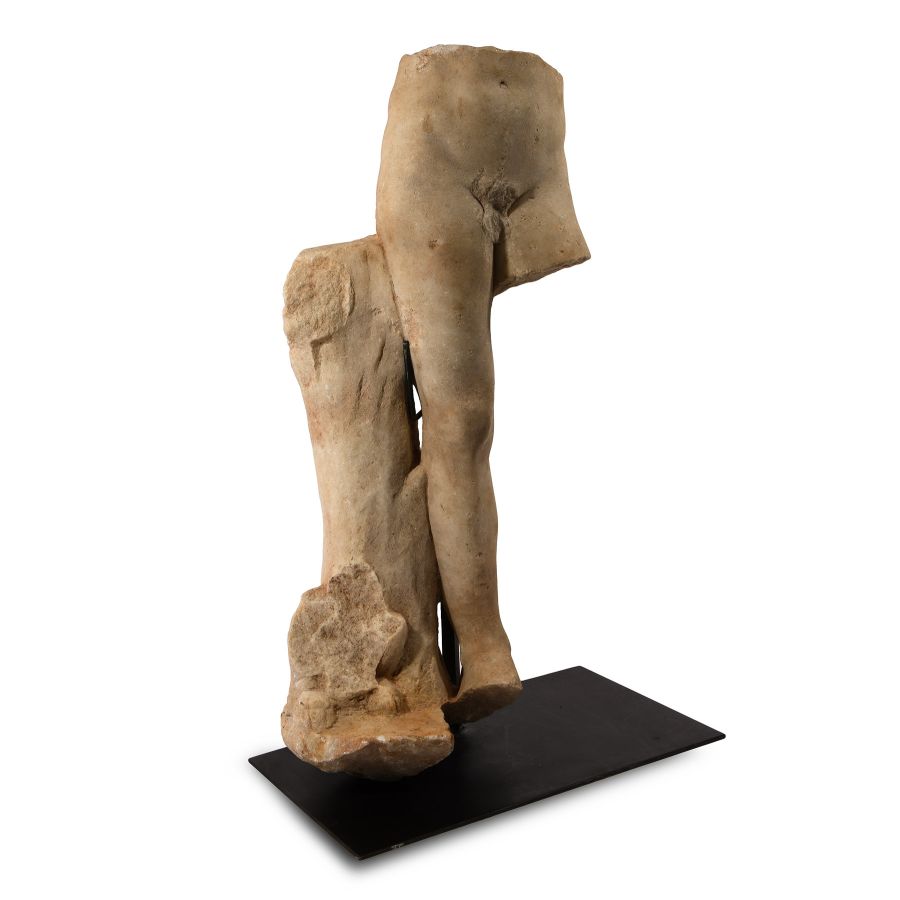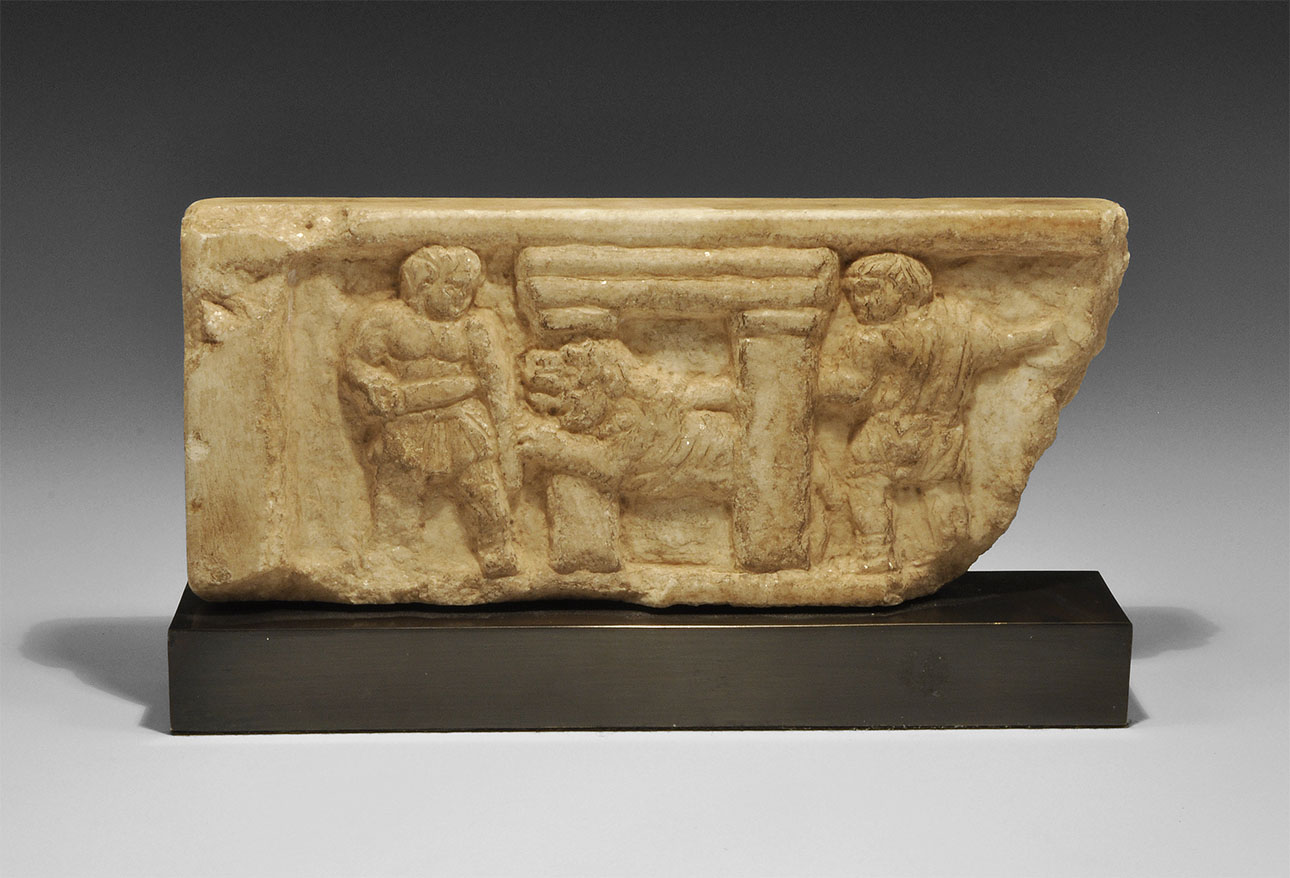A RARE ROMAN MARBLE HEAD OF A BOY AS EROS
CIRCA 1ST/2ND CENTURY A.D., ON A 16TH CENTURY BUST AND SOCLE
The head set on Renaissance shoulders, further turned socle below
60cm high overall, 35cm wide across the shoulders
Provenance;
Private collection, France.
Literature;
C. Giroire & D. Roger, Roman Art from the Louvre, exh. cat., Musée du Louvre, Paris, 2007.
V. Dasen, 'Wax and Plaster Memories: Children in Elite and non-Elite Strategies', in V. Dasen and T. Spath (eds.), Children, Memory, and Family Identity in Roman Culture, Oxford, 2010, pp. 109-145.
J. Huskinson, 'Constructing Childhood on Roman Funerary Memorials', Hesperia Supplements, vol. 41, (2007), pp. 323-338.
Oscar F. Waldhauer, Sketches on the History of Ancient Portraiture, Vol. I, St. Petersburg, 1921, pp. 43-48.
Epitomising youthful charm, this work shows the thoughtful expression typical of classical portrait busts. His soft face is characterised by supple cheeks, full lips, almond-shaped eyes, and dimpled chin. The boy's hair is styled in the guise of Cupid, the Roman God of affection and desire; a large central braid which runs from the forehead to the crown of his head parts gently tousled thick waves of hair. Though this distinctive hairstyle can be traced back to depictions of Eros from Hellenistic Greece, it was adopted by the Romans in the following centuries as a defining characteristic of the deity Cupid. Whilst the bust's large central braid leads to an identification with Cupid, the slightly imperfect, asymmetric facial physiognomy suggests that the work was sculpted as a private commemorative portrait. A particularly popular practice in the second century A.D. saw the sculpting of portrait busts with personalised features styled into an overall type of mythical figure, and examples can be found in both the case of adults and children.
Comparison can be drawn both with a circa 2nd century A.D. marble Roman Child (previously in the Hermitage Museum, St. Petersburg) and circa 2nd century A.D. marble Head of a Boy or Harpocrates (previously in the Collection of Etienne Duval (1824-1914), Geneva)- both illustrated in Oscar F. Waldhauer, Sketches on the History of Ancient Portraiture, Vol. I, St. Petersburg, 1921, pp. 43-48 viewable online in Russian and English WALDHAUER CHAPTER THREE
Further images for the Duval head are viewable online here HERE (1) HERE (2) and HERE (3) the last being a reproduction of the portrait of Etienne Duval by Henry van Muyden (1860 - 1936),with the winged head conspicuous in the background.
A RARE ROMAN MARBLE HEAD OF A BOY AS EROS
CIRCA 1ST/2ND CENTURY A.D., ON A 16TH CENTURY BUST AND SOCLE
The head set on Renaissance shoulders, further turned socle below
60cm high overall, 35cm wide across the shoulders
Provenance;
Private collection, France.
Literature;
C. Giroire & D. Roger, Roman Art from the Louvre, exh. cat., Musée du Louvre, Paris, 2007.
V. Dasen, 'Wax and Plaster Memories: Children in Elite and non-Elite Strategies', in V. Dasen and T. Spath (eds.), Children, Memory, and Family Identity in Roman Culture, Oxford, 2010, pp. 109-145.
J. Huskinson, 'Constructing Childhood on Roman Funerary Memorials', Hesperia Supplements, vol. 41, (2007), pp. 323-338.
Oscar F. Waldhauer, Sketches on the History of Ancient Portraiture, Vol. I, St. Petersburg, 1921, pp. 43-48.
Epitomising youthful charm, this work shows the thoughtful expression typical of classical portrait busts. His soft face is characterised by supple cheeks, full lips, almond-shaped eyes, and dimpled chin. The boy's hair is styled in the guise of Cupid, the Roman God of affection and desire; a large central braid which runs from the forehead to the crown of his head parts gently tousled thick waves of hair. Though this distinctive hairstyle can be traced back to depictions of Eros from Hellenistic Greece, it was adopted by the Romans in the following centuries as a defining characteristic of the deity Cupid. Whilst the bust's large central braid leads to an identification with Cupid, the slightly imperfect, asymmetric facial physiognomy suggests that the work was sculpted as a private commemorative portrait. A particularly popular practice in the second century A.D. saw the sculpting of portrait busts with personalised features styled into an overall type of mythical figure, and examples can be found in both the case of adults and children.
Comparison can be drawn both with a circa 2nd century A.D. marble Roman Child (previously in the Hermitage Museum, St. Petersburg) and circa 2nd century A.D. marble Head of a Boy or Harpocrates (previously in the Collection of Etienne Duval (1824-1914), Geneva)- both illustrated in Oscar F. Waldhauer, Sketches on the History of Ancient Portraiture, Vol. I, St. Petersburg, 1921, pp. 43-48 viewable online in Russian and English WALDHAUER CHAPTER THREE
Further images for the Duval head are viewable online here HERE (1) HERE (2) and HERE (3) the last being a reproduction of the portrait of Etienne Duval by Henry van Muyden (1860 - 1936),with the winged head conspicuous in the background.















Try LotSearch and its premium features for 7 days - without any costs!
Be notified automatically about new items in upcoming auctions.
Create an alert